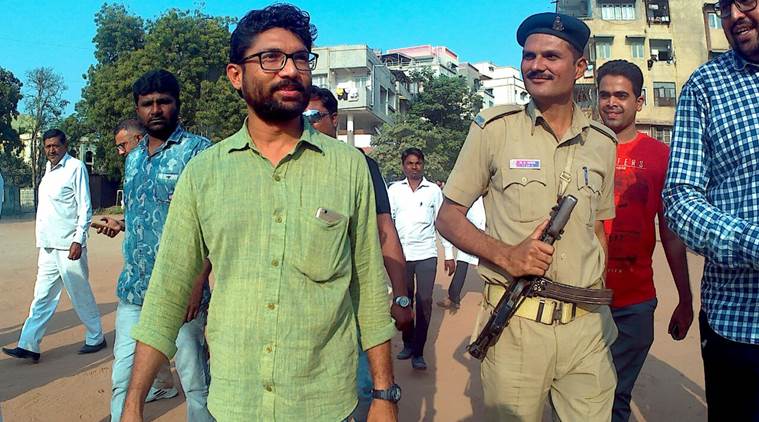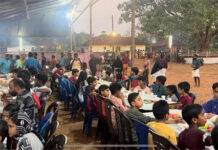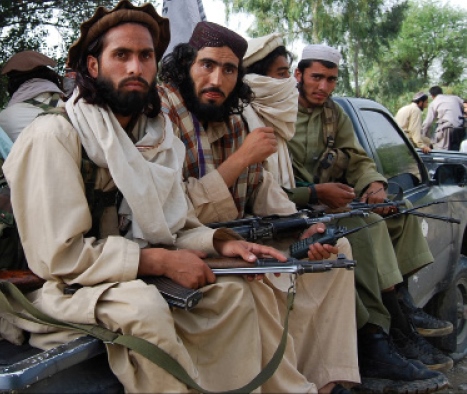The 17th Lok Sabha Elections pose crucial stakes for defining the democratic republic of India. The 2019 elections have shown important developments in the grand alliances formed, high women and youth voters’ numbers, and more importantly in the emergence of youth leaders, representing various constituencies.
In Indian politics, among others, the lack of representation of young in the parliament is stark with the average age of MPs being typically above 50. The political parties continue to show their preference to choose their MPs based on seniority and hierarchy. As the political empowerment still continues to be the domain of the aged, the political parties mostly function as a family business with the senior members in the positions of power holding out the seats until their heirs are ready to take it forward. In such a stiff hierarchy and dynasty politics, at times, some of the young leaders are pushed to the positions of responsibility and gain visibility mainly due to their political legacy, wealth, and connections.
In a country like India which lacks structural interventions and affirmative actions to encourage youth to participate in elections, there are grading layers of barriers for the young political aspirants to participate and represent their issues in the parliament. Dynasty politics, rise in money and muscle power controlling the campaign trail, rotational reservation in municipal and panchayat elections, and indifference and under-reportage of political violence against the women and members from marginalized communities, have actively discouraged youth to aspire engagement in mainstream politics.
With the median age of the country in 2018 being 27.9 years, India is young vibrant demography. In a country with two-thirds of its population under 35 and forty-five million young people who will become first-time voters as they turn 18, India’s young demographic is extremely important in this election in deciding which party will come into power and the nature of political discourse over the coming years. If elections are important in establishing the causality between the aspirations and expectations of the people and acts of governance, proportional representation is an important means to realize that democratic ideal. However, the Indian political structure has skewed representation along the lines of gender, age, caste, and religion.
A proportional representation of the candidates organized along the markers of their oppression should be looked beyond the vote-bank politics that is overused and much derided in the politic rhetoric today. The young leaders while organized and grappling within their situated identities are able to replace the questions of identity into demands for justice for upholding the constitutional culture. Their campaigns for and beyond the Lok Sabha polls have focussed on discrimination, violence, demanding procedural and institutional integrity and nurturing a dialogue that emphasises the values upheld by constitution. Such a dialogue is more coherent, and sharper, and focused on the issues than filled with empty rhetoric and outrage at the opposition.
While the regime of the BJP government experienced muffling of freedom of expression, it also saw the rise of powerful voices of dissent by leaders across many parts of the country and coming together to protest against Modi’s policies.

Several leaders such as Jignesh Mevani, a young MLA from Vadgam district in Gujarat, JNU student leaders Shehla Rashid, Kanhaiya Kumar, and Umar Khalid, and Bhim Army Chief Chandrashekar Azad have left a prominent mark for themselves as promising leaders through the important issues that they have raised and the integrity of their political engagement.
In this election, the emergence and assertion of these young leaders will mark a significant change in the trajectory of Indian politics. The assertion of these leaders amidst the vote bank politics practiced by the age-old decrepit parties gives new hope and political imagination for young and the masses to keep up their engagement with the constitutional values and democratic fervor.
Jignesh Mevani, a lawyer and Dalit activist came to the forefront after the Una flogging incident. When the self-appointed ‘Gau Rakshaks’ allegedly flogged four Dalit youths for skinning a dead cow, the youth leader, who became the face of the protest movement, asked the Dalits to not touch the cow carcass and other menial jobs imposed on them systemically and demand for their land in accordance with the Agricultural Land Ceiling Act. In the subsequent year after the freedom march, Mevani represented the Vadgam constituency for the assembly elections and subsequently won the position. He has since been in the public sphere advocating for the restoration of constitutional rights and values that have been depreciating under the current ruling government and fighting for the violence inflicted on Dalits, Muslims, and Adivasis under the Modi government.
In this election for Lok Sabha seats, Mevani has extended his complete support to Kanhaiya Kumar, former JNU student union leader and currently contesting for MP seat from Begusarai constituency as a CPI representative. The election campaign trail in Begusarai has seen a new style of electoral campaigning challenging the corporate muscle power and demanding vote based on caste and communal lines. Kanhaiya Kumar during his campaign has been able to bring the ‘muddas’ from the from his constituency within the national front and able to articulate a poignant narrative that is global embedded within his local contexts.
Such restoration of idealism where the elections are fought on ‘muddas’ or issues rather than empty rhetoric and divisive jingoism creates new hope for the masses. One of the salient features of the campaign trail has been the blossoming solidarity with people from different walks, ideologies, coming together to create a visceral impact. During the campaign, many eminent public figures, Ravish Kumar, Swara Bhaskar, Prakash Raj, Jignesh Mevani, Shehla Rashid, Kunal Kamra, Javed Akhtar, and innumerable JNU students, all of whom have been voices of the secular progressive youth in their spheres have lend their support to Kanhaiya Kumar by participating in the campaign physically as well as in social media platforms. Such a united front of young leaders from different spheres, having alternative world views, questioning the decadent political institutions and raising issues aligned with the constitutional values, is sure to provide a new premise for the future political discourse in the country.
One important aspect of all these youth leaders has been how they have brought the discourse of social justice and institutional transformation to the streets, creating avenues for the masses to reimagine and demand justice from their representative heads.

One such leader who stirred nation with his demand for justice for Dalits is Chandrashekar Azad, chief of the Bhim Army along with Vinay Ratan. Chandrashekar ‘Raavan’ is a lawyer and hails from Saharanpur district in UP. He came to the spotlight after he raised his voice against the atrocities on Dalits in his village. He, along with Vinay Ratan started the Bhim Army, an organization that works towards providing free education to Dalit children. Chandrashekar Azad’s assertion in the public sphere has been true to Babasaheb Ambedkar’s clarion call, ‘Educate, Agitate, and Organize’. In March, Chandrashekar announced that he would be contesting from the Varanasi constituency challenging the Prime Minister. However, he withdrew his statement after few weeks amidst the controversy raised by the BSP leader Mayawati, where she accused Chandrashekar as a BJP proxy to divide the votes of the Dalits. Chandrashekar stated the reason for the withdrawal of his candidature to not divide the votes and put up a unified front to ensure the defeat of the BJP government from incumbency.
While the issues raised by the young leaders have been relevant to the local concerns of their constituencies, transcends their immediate location, and appeals to the larger national consciousness, within a decadent and draconian political structure where the parties use the caste and communal politics to feed their vote banks, will the assertion by these young leaders be able to transform the consciousness of the masses into winnable votes is to be seen.
Shehla Rashid, another fiery student leader from JNU, has recently joined another youth leader, IAS topper Shah Faesal’s party, J&K People’s Movement. Shehla’s past credentials, her experiences as a student leader in JNU would further enable her to determine the aspirations and expectations of the people of Kashmir to contest in the coming Assembly Polls. The troubled conflict-ridden nature of the state demands a different set of rubrics to measure her and her party’s personal and political credibility. While the party has created an initial buzz due to the personal trajectories of Shehla and Shah Faesal, the discourse that the party deems to create within the ideological spectrum of Kashmir is still awaited by the public. However, the party pledges towards a politics of integrity to wade political and governance issues in the state.
While these young leaders have garnered media attention, several other young contestants, contesting under a party ticket or independently haven’t gathered the same level of media attention.

Vijay Pedapudi, a Dalit Scholar who was among the five students expelled by the University of Hyderabad along with Rohit Vemula, contested the elections from Parchur segment representing Bahujan Samaj Party. His political entry was welcomed by Ambedkar Student Association students from all across the country to volunteer for his election campaign and also supported by Jana Sena Party, the CPI, and the CPM. Vijay’s decision to join politics is informed by his decision to uplift the marginalised section and fight against the oppressive regime of BJP.
Another scholar from JNU, Virendra Kumar, will contest the Lok Sabha election from the Godda constituency as a nominee of Jharkhand Jantantrik Mahasabha. Like Kanhaiya Kumar, his campaign trail has also focussed on the local concerns on the issues faced by the marginal sections of the society and challenging Adani’s forcible acquisition of land for the power plant in Godda. His campaign funding is also crowd sourced and will draw in supporters from JNU and other universities.
The visibility of these young leaders in the current election polls and their ability to create a dialogue for a secular, progressive, and a democratic India amidst the incumbent government’s communal speeches and ultra-nationalism is sure to create better, stronger, and more representative democracies at the Parliament. A new survey by Inshorts to understand the youth’s position on voting process and importance of casting vote revealed that an overwhelming 85% of the youth recognize the importance of casting their vote and think it should be compulsory. About 75% of the youth surveyed also stated that they do extensive research about the candidate before casting their vote. The advent of social media has increased the political awareness of the young and created more robust avenues for political expression and engagement in the digital medium. However, it raises a question of whether heightened political expression and engagement in digital spaces necessarily lead to political action of casting the vote on the poll day. While a quarter percentage of the young are skeptical about the EVMs, some feel that the system of voting as psychological appeasement that does not really bring any change.
The young leaders representing various constituencies with their commitment to transforming the institutional functioning of political and governance structures in India and addressing the issues of employment, inequality, and censorship of freedom of expression faced by the young voters and addressing the discontent among the youth, generate immense hope for a new genre of Indian politics.












